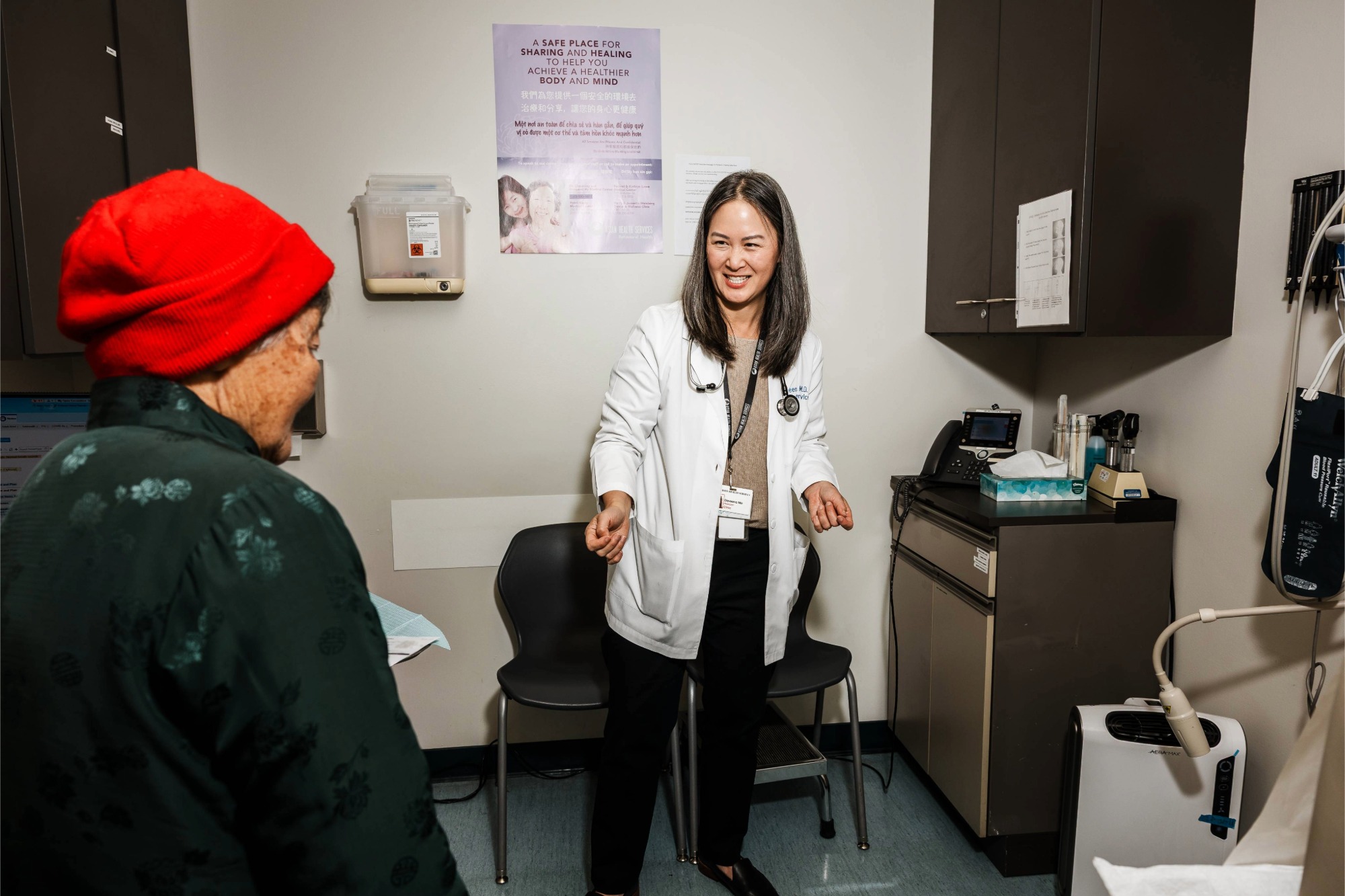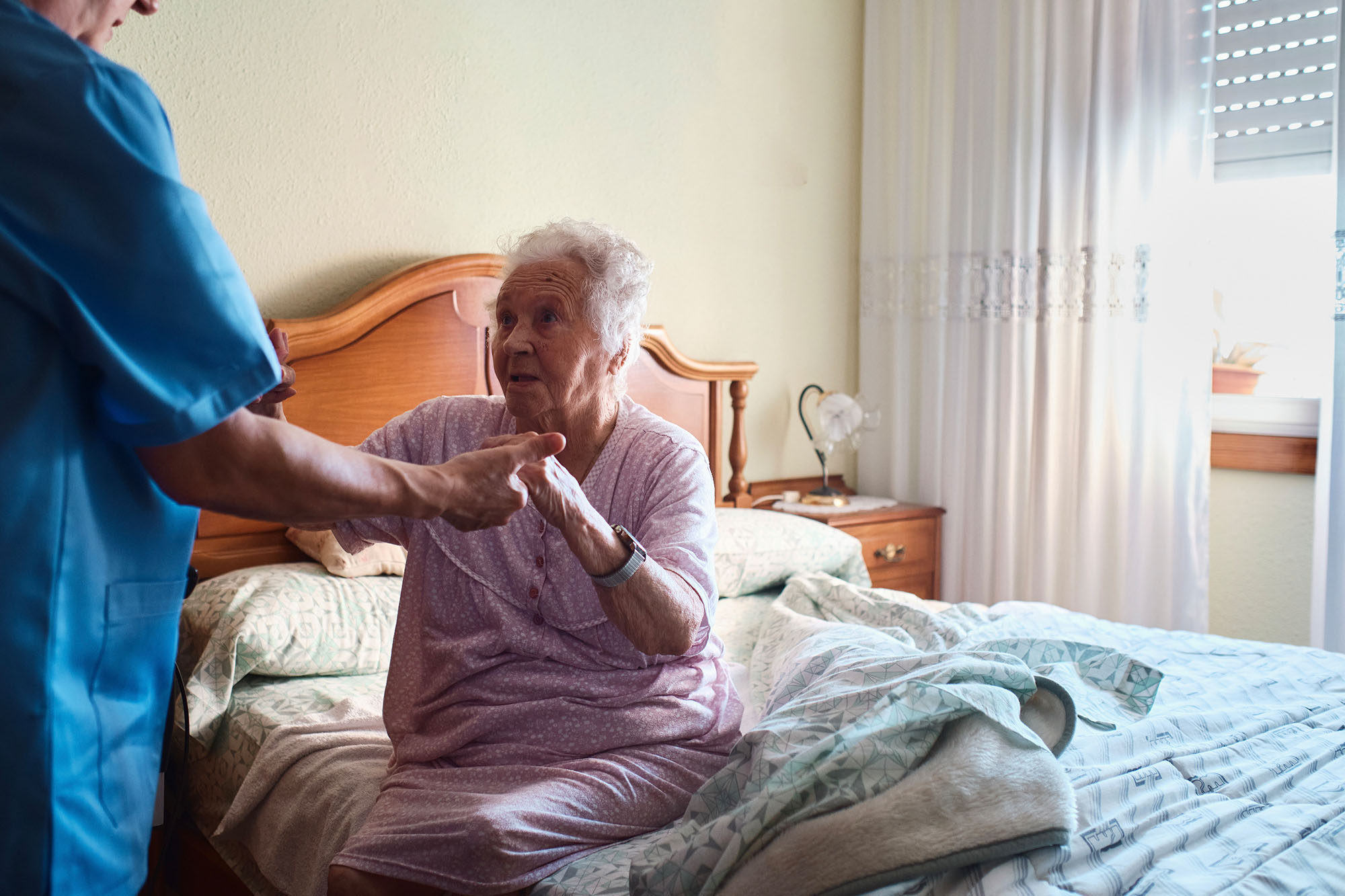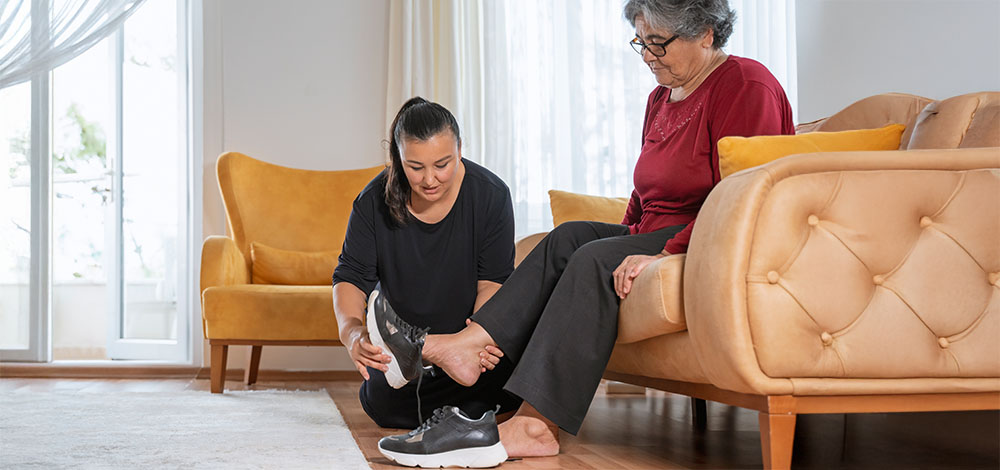
View the Report
Jump to All Downloads & LinksThe full report and executive summary are available under Document Downloads at the bottom of this page.
Nursing homes have been carrying the heaviest burden of COVID-19 cases and deaths compared to other health facilities both in California and across the nation. According to the California Department of Public Health (CDPH), the state has had a cumulative 29,232 COVID-19-positive nursing home residents and 4,835 coronavirus-related deaths through November 15, 2020.
To better understand the factors behind the spread of COVID-19 in California nursing homes, Cal Hospital Compare (CHC), in partnership with IBM Watson Health and the University of California, San Francisco (collectively known as the CHC Project Team), studied COVID-19 data from more than 800 nursing homes at two points during the pandemic — once in May 2020 and once in August 2020.
Overall Findings
The study, COVID-19 in California’s Nursing Homes: Factors Associated with Cases and Deaths, found significant spread of coronavirus between May and August, when the number of COVID-19 cases and deaths in nursing homes more than doubled. In May, a quarter (25%) of the nursing homes studied had one or more residents with COVID-19, and 16% had at least one resident death attributable to the coronavirus. By August, 66% of facilities had a COVID-19 case, and 37% had at least one resident who had died of COVID-19.
The study notes that several facility and resident characteristics were associated with higher COVID-19 cases and deaths, including ownership status, nursing home size, staffing levels, and resident demographics. The most dominant factors in the spread of the coronavirus evolved as the pandemic progressed. For example, earlier in the pandemic, ownership status was most correlated with large numbers of cases and deaths, while in August the biggest driver was resident demographics.
The research, commissioned by the California Health Care Foundation, underscores the importance of continued research to understand the evolving dynamics of the pandemic. Based on the research results, the CHC Project Team developed a series of recommendations for addressing these issues.
Major Factors Driving COVID-19 Case and Death Rates
- Ownership status: Early in the pandemic, for-profit nursing homes had COVID-19 case rates five to six times higher than those of nonprofit and government-run nursing homes. This was true of both independent nursing homes and those that are part of a corporate chain.
- Nursing home size: At the August time point, larger nursing homes (those with at least 99 licensed beds) had case rates at least 55% higher than those with 68 or fewer licensed beds. The COVID-19 case rate and death rate were consistently higher for larger nursing homes (those with at least 99 licensed beds) versus smaller facilities (those with 68 or fewer licensed beds).
- Staffing levels: COVID-19 case rates were significantly higher in nursing homes with staffing levels below those recommended for nurses (0.8 registered nurse hours per resident day) and total staff (4.1 hours per resident day). In May, nursing homes with total staff levels under 3.8 hours per resident day had about twice the case rates of homes with staffing levels greater than 4.4 hours per resident day. As the pandemic progressed, nursing homes with adequate registered nurse (RN) staffing had greater protection against COVID-19 cases and deaths: Nursing homes with RN staffing greater than 0.8 hours per resident day had 50% fewer COVID-19 cases than those with fewer RN hours per resident day.
- Resident demographics: As the pandemic spread, some demographic factors of the nursing home population became more significant risk factors.
- Age: In August, nursing homes with more than 45% of residents age 85 or older had an almost 50% higher COVID-19 case rate and a 70% higher COVID-19 death rate.
- Gender: Between the May and August time points, nursing homes with more than 49% male residents experienced a more than 2.5-fold increase in COVID-19 case rates.
- Race/ethnicity: The COVID-19 case rate was disproportionately higher in nursing homes with a higher percentage of Black or Latinx residents. In May, nursing homes with at least 2% Black residents had COVID-19 case rates that were about three times higher than facilities with less than about 2% Black residents. By August, nursing homes with more than 26% Latinx residents had a 50% higher case rate than those with less than 6% Latinx residents.
Recommendations in Five Key Areas
Based on the research results, the CHC Project Team developed a series of recommendations aimed at meaningfully improving the quality of care in nursing homes during the current pandemic and going forward. Most can be implemented immediately. Five areas of recommendations are excerpted here:
- Ownership oversight: Researchers recommend that CDPH immediately strengthen oversight, especially in at-risk facilities, over minimum federal nursing home standards, including staffing, infection control, sanitation, and emergency requirements. The report also recommends giving the Department of Health Care Services (DHCS) more authority to increase annual financial disclosure requirements for nursing homes and to increase financial controls on cost centers.
- Facility size and design: The study suggests CDPH should launch a collaborative learning program among nursing homes to share effective practices that prevent and reduce the spread of infections. It also suggests nursing homes should reduce the number of residents within their largest facilities and increase the use of private rooms. The study also recommends establishing a statewide task force to study the feasibility and financial mechanisms for the future modernization, redesign, and rebuilding of nursing homes to reduce the size of facilities.
- Staffing: The study says CDPH should immediately require all nursing homes to meet Centers for Medicare & Medicaid Services requirements that facilities “have sufficient nursing staff with the appropriate competencies and skills sets.” Additionally, DHCS should develop pathways for nursing homes to reduce turnover and increase their staffing levels over the next two years by redesigning the Medi-Cal reimbursement system. The report also says CDPH should allow select family members and friends to be deemed essential workers in the time of crisis to supplement resident care.
- Health equity promotion and infection prevention: The study recommends that CDPH take a variety of steps to promote equity. Given the disproportionate number of COVID-19 infections in nursing homes with a large proportion of Black and Latinx residents, CDPH should ensure all facilities test staff weekly for COVID-19 and require at least annual training on issues from infection control to culturally sensitive care. CDPH should also distribute vaccines to residents and staff in the highest-risk facilities first.
- Transparency and public reporting of data: To make nursing home data more consistent and easier to access, the study recommends that CDPH develop a one-stop nursing home information dashboard, updated weekly, to monitor COVID-19 or other infectious disease outbreaks in nursing homes.
Authors & Contributors
Bruce Spurlock, MD
Bruce is executive director of Cal Hospital Compare.
Alex Stack, MPH
Alex is director of Programs & Strategic Initiatives, Cal Hospital Compare.
Charlene Harrington, PhD, RN
Charlene is professor emerita at University of California, San Francisco.
Leslie Ross, PhD
Leslie is a specialist with the Institute for Health & Aging / Department of Social & Behavioral Sciences at University of California, San Francisco.
Mahil Senathirajah, MBA
Mahil is senior director with IBM Watson Health.
Frank Yoon, PhD
Frank is senior statistician with IBM Watson Health.
Parker Lewis
Parker is senior manager of client services with IBM Watson Health.
Richele Benevent, MS
Richele is senior programmer and data analyst with IMB Watson Health.





